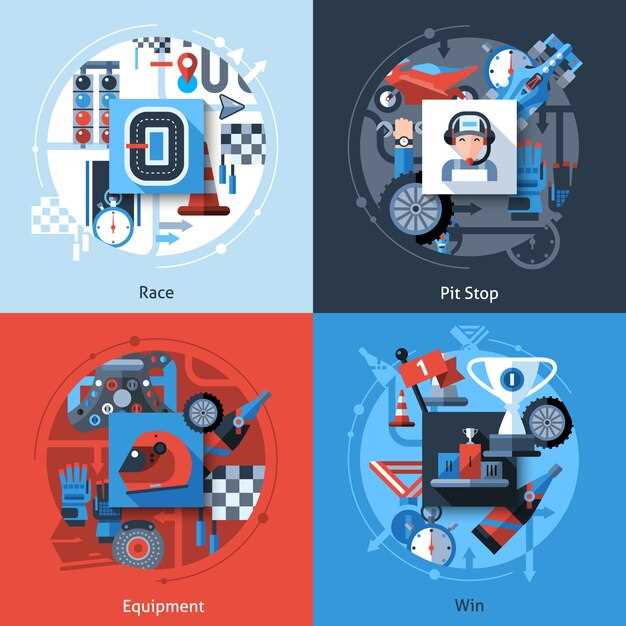
In the high-speed world of motor racing, safety is paramount. With the thrill of competition comes the inherent risks associated with high-performance vehicles, high speeds, and intricate track layouts. Therefore, modern racing events have adopted comprehensive safety protocols designed to protect participants, including drivers, crew members, and officials. These protocols are not only critical for individual safety, but also for maintaining the integrity of the sport.
One of the cornerstones of participant safety is the implementation of stringent pre-race inspections. Both vehicles and equipment undergo rigorous checks to ensure compliance with established safety standards. Advanced technologies, such as telemetry and on-board diagnostics, are utilized to monitor vehicle performance and identify potential hazards before they escalate into accidents. These inspections play a vital role in minimizing mechanical failures that could jeopardize the safety of all participants.
Moreover, the role of personal protective equipment (PPE) cannot be overstated. Modern racing suits, helmets, and gloves are designed with cutting-edge materials that offer enhanced protection against fire and impact. Standards set by organizations like the FIA ensure that all the gear meets or exceeds safety requirements, providing an essential layer of security for drivers during high-stakes races. As the technology in racing evolves, so too do the specifications for this protective gear, highlighting the ongoing commitment to safety within the racing community.
Additionally, effective emergency response strategies are an integral aspect of racing safety protocols. Each event is required to have a well-trained medical team on standby, equipped with the necessary resources to handle any incidents that may occur. Quick and coordinated responses can significantly mitigate the impact of accidents, making it crucial for all racing venues to establish clear procedures and ensure that all personnel are well-versed in emergency protocols.
Pre-Race Inspections: Ensuring Vehicle and Equipment Readiness

Pre-race inspections play a crucial role in maintaining the safety and competitiveness of racing events. These thorough evaluations are conducted to ascertain that each vehicle meets the established safety standards and is equipped with the necessary gear for optimal performance on the track. The inspections cover multiple aspects, including the vehicle’s structural integrity, safety systems, and compliance with the regulations set forth by the governing bodies of the sport.
During these inspections, the vehicle’s engine and transmission are assessed for performance metrics and potential leaks. Mechanics also check the suspension and braking systems to confirm that they are functioning correctly and can withstand the demands of high-speed racing. Additionally, tires are examined for proper tread depth and inflation levels, both critical for maintaining grip and handling under extreme conditions.
Equally important is the inspection of safety equipment, which includes helmets, fire suits, and harnesses. These items must be certified and undamaged, providing the necessary protection for drivers in case of an accident. The use of standardized equipment ensures that all participants have access to the same level of safety, which is vital in a high-stakes environment.
Inspectors often utilize checklists to ensure that no vital aspects are overlooked. This systematic approach not only helps in identifying potential mechanical failures but also reinforces the importance of adhering to safety protocols. Teams are provided with feedback and are sometimes required to make adjustments or repairs before being cleared to race.
Incorporating pre-race inspections into the overall race day agenda fosters a culture of safety and responsibility among participants. By prioritizing vehicle and equipment readiness, organizers and teams contribute to the integrity of the sport while ensuring that all competitors can perform to the best of their abilities in a safe environment.
Personal Protective Gear: Maximizing Safety for Drivers

Personal protective gear is critical in ensuring the safety of drivers during racing events. This gear is specifically designed to shield participants from various hazards, including fire, impact, and ejection from the vehicle. Key components include helmets, fire-resistant suits, gloves, and footwear, each serving a unique purpose in enhancing safety.
Helmets are essential for protecting the head from traumatic injuries caused by collisions or impacts. Modern racing helmets are constructed from lightweight yet durable materials, featuring advanced padding for comfort and fit. Many are equipped with a visor to shield the eyes from debris and glare, further improving visibility during high-speed races.
Fire-resistant suits, often made from Nomex or similar materials, are designed to resist flames and heat. These suits minimize the risk of burns in the event of an accident involving fire. A proper fit is crucial, as loose fabric can pose additional hazards during a race. Suits typically include long sleeves and pants to ensure maximum coverage.
Gloves are another vital element of personal protective gear. They provide grip and control over steering and other vehicle functions while ensuring protection from heat and abrasions. Well-fitted gloves enhance a driver’s ability to handle the vehicle under extreme conditions.
Footwear must also adhere to safety standards, offering both protection and grip. Racing shoes are typically constructed from fire-resistant materials and feature soles designed to provide effective traction on pedals, ensuring optimal control during high-speed maneuvers.
Additional gear, such as head and neck restraints, plays a crucial role in minimizing injuries during crashes. These devices prevent excessive movement of the head and neck, dramatically reducing the risk of serious injuries such as concussions or whiplash.
Regular inspections and maintenance of personal protective gear are vital to ensure its reliability and effectiveness. Each component should be checked for wear and tear before participating in any racing event. Investing in high-quality gear and adhering to safety standards can significantly increase the chances of driver safety in modern racing.
Emergency Response Plans: Preparing for On-Track Incidents
In motorsport, the unpredictability of high-speed racing necessitates comprehensive emergency response plans to safeguard participants. These plans are vital for mitigating risks and ensuring swift action during unforeseen incidents on the track.
A well-structured emergency response plan includes several key elements:
1. Incident Identification: Understanding the types of incidents that can occur, from vehicle collisions to fires, is crucial. This identification assists in tailoring response strategies to specific situations.
2. Team Coordination: A successful response hinges on clear communication among all team members. Designated roles must be established, including a lead responder, medical personnel, and communication officers who ensure that information is conveyed effectively and rapidly.
3. On-Site Medical Resources: Ambulatory services, medical vehicles, and emergency personnel should be readily available. Medical teams should undergo regular training to remain proficient in trauma care relevant to racing accidents.
4. Equipment Readiness: Fire extinguishers, extraction devices, and first aid kits must be strategically placed and easily accessible around the racetrack. Regular checks should be conducted to ensure equipment is functional and up-to-date.
5. Communication Systems: Reliable communication tools, such as radios and signal boards, facilitate immediate interaction between the track officials and emergency services. Encrypted systems may be considered to enhance security during critical situations.
6. Training and Drills: Frequent drills simulating various incident scenarios prepare personnel to act swiftly under pressure. These exercises foster familiarity and efficiency in executing the emergency response plan.
7. Post-Incident Review: Analyzing incidents after they occur helps identify weaknesses in the response plan. Gathering feedback from all parties involved allows for continuous improvement of protocols.
Implementing an effective emergency response plan not only enhances the safety of participants but also instills confidence among spectators and teams, knowing that their well-being is prioritized during racing events.
